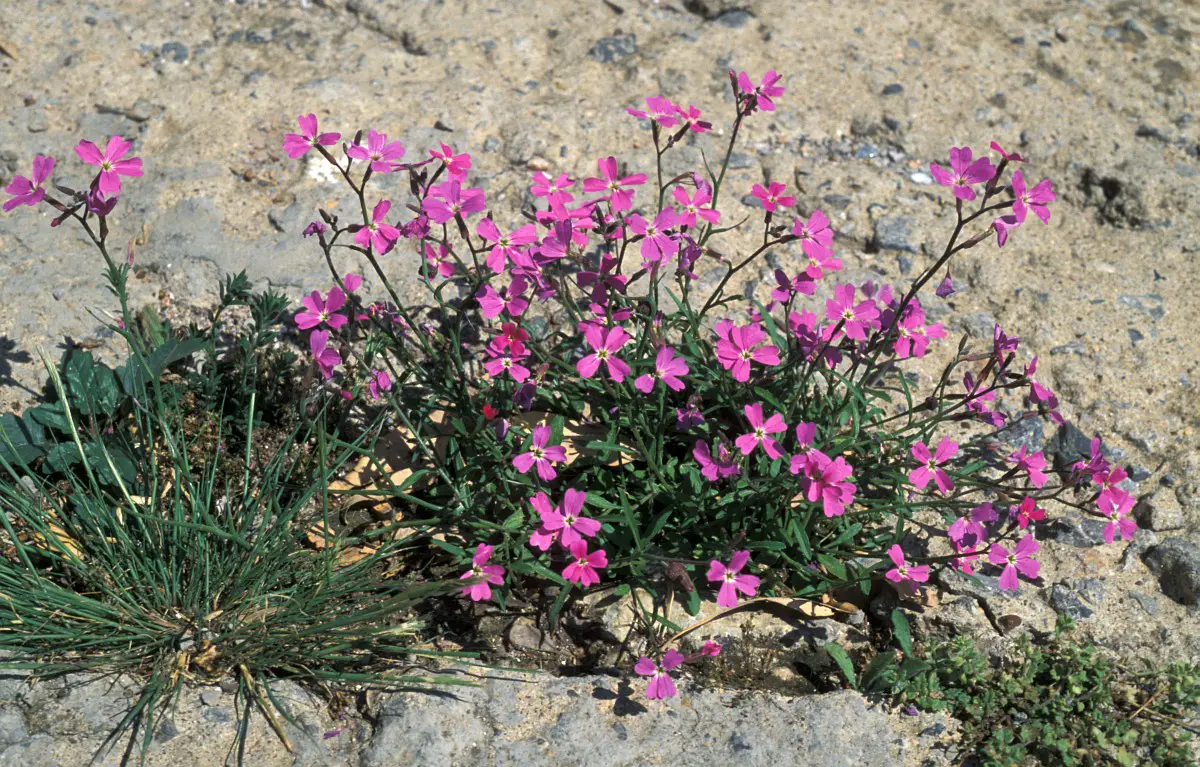
The colored silene is an annual herb belonging to the family of the Caryophyllaceae. This genus is made up of about 80 species with representation in the peninsula. The term colorata in Latin meant bright color, due to the intense pink color of its flowers, although today this term refers to the meaning that is linked to red or red.
The term silene, it is presumed that it comes from Silenioa character with a prominent belly who remained drunk and who was the tutor of Dionisio, the point is that a good part of the Silenes have the pot-bellied chalice and that is the answer to a part of his name.
Description of the colored silene

This is one annual plant growing from 15 to 60 cm whose stems are covered with non-glandular hairs and stand erect. It has leaves between spatulate and linear, sericeous and vilosy. The flowers are presented in monocass and in very few occasions alone, the bracts in most cases are ovate and the lower ones are distinguished because they are generally shorter than the pedicels, which in the lower flowers measure from 12 to 25 mm.
The chalice is completely puberulous, and vile specifically on the nerveswhich in most cases are not anastomosed, have subacute or obtuse teeth free of scarious margin and ciliates.
The blade of the petals is mostly pink in color and can vary to white, bipartite, it has a nail with a central nerve on the abaxial face, scanned towards the apex. Flowering occurs between the months of January and June.
Regarding the fruit, this occurs in a capsule that measures between 6 and 10 mm, its shape is ovoid and produces seeds of 0,6 to 1,4 x 1,17 mm that are flat, with wavy margin, reticulated and sometimes a little aquinulated.
Habitat
This herb occurs very easily in beach areas, dunes, sandy substratesroadsides, farm fields, rocky soils and disturbed places. Its natural distribution occurs towards the Mediterranean area, to the west until it reaches Lanzarote, the east until it reaches the north of Iran.
It is characterized by being weed and roadIt can appear in meadows of holm oak groves or in open bushes and is very common throughout the peninsula except the northern area.
Care
This plant is also widely known as Colleja and Carnation And given its characteristics and origin, it does not require further care, beyond what we will indicate below:

Light needs. It is an herb that tolerates direct sun exposure very wellalthough if it is under your care you can place it in a place where it receives semi-shade. With a normal substrate of those in the garden to which you will add sand to improve drainage, it will be enough since it is what resembles the soil in its natural habitat.
You do not need continuous risk, since excess moisture rots the plant. Before putting water on the soil, make sure it is dry and do not generate puddles due to overwatering. The ideal time for pruning is when flowering begins to decline, you have to gradually remove the stems where the flowers have withered.
Every fifteen days add a mineral fertilizer to the substrate, when it is in the flowering stage. In general, this is a plant that is quite resistant to pests and diseases that attack gardens, in this sense if these recommendations are followed you’re going to have a nice weed for quite a while.
Also keep in mind that the multiplication of this takes place in autumn or spring by dividing the seeds that have been sown at the end of the winter season, although these are quite effective in the self-reproduction process.
It is important that you keep your attention on this plant in your garden as they tend to be invasive when allowed to grow freely. Are annual species are ideal for your gardenSince you can form solid ones with them, borders are also quite used to place on ground surfaces where you do not want to plant grass and they will be very beautiful.
